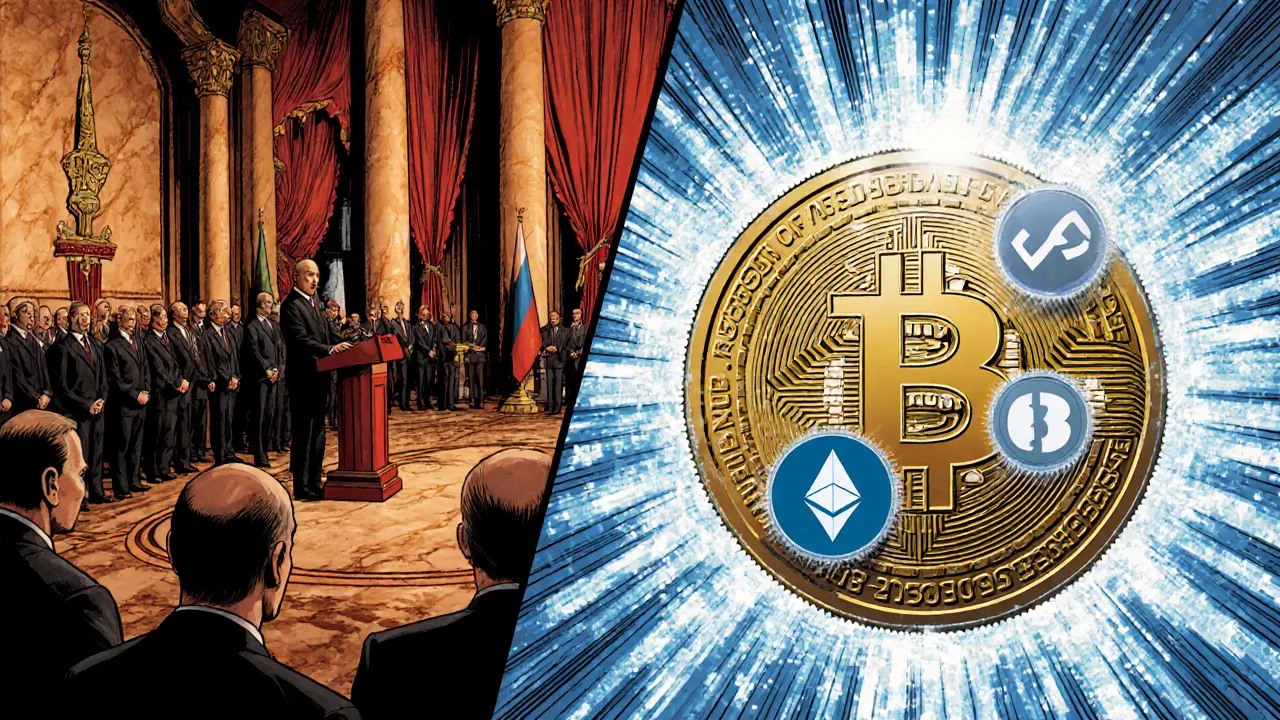Russia's New Bitcoin Cross‑Border Payment Rules 2025
Explore Russia's new 2025 regulations allowing Bitcoin for cross‑border payments, the pilot framework, compliance steps, market impact and future outlook.
Continue ReadingWhen dealing with Russia crypto regulations, the set of rules that govern how digital assets can be used, stored, and traded inside the Russian Federation. Also known as Russian crypto law, these regulations have forced banks to block crypto‑related transactions, effectively creating a crypto ban, a prohibition that stops traditional financial institutions from handling cryptocurrency deposits or withdrawals. Because of that, traders turn to stablecoins, digital tokens pegged to a stable asset like the US dollar, which can move value without triggering banking alerts. Another popular escape route is using P2P exchanges, platforms that match buyers and sellers directly, bypassing banks altogether. In short, Russia crypto regulations drive a cascade of workarounds: the ban pushes users toward stablecoins, stablecoins encourage peer‑to‑peer trading, and peer‑to‑peer trading keeps Bitcoin flowing despite the banking freeze.
The core of the ban is that Russian banks must freeze any account activity linked to crypto wallets. This means a regular user can’t simply send Bitcoin to a bank‑linked debit card. The rule requires alternative channels, so traders start looking for ways to convert crypto into fiat without a bank. One obvious method is swapping Bitcoin for a stablecoin on a global exchange, then selling that stablecoin on a local P2P marketplace. That chain of steps enables users to stay in the market while staying compliant with the law’s letter. At the same time, the ban influences the rise of domestic crypto‑friendly services that offer crypto‑to‑cash vouchers, another practical work‑around that sidesteps banks entirely.
Another piece of the puzzle is the government's focus on anti‑money‑laundering (AML) compliance. The new AML framework forces exchanges to collect detailed user data, which many Russian users see as a privacy risk. As a result, bank freezes, the act of a financial institution locking an account because of suspected crypto activity have become a common story in crypto forums. This drives even more interest in solutions that don’t rely on traditional banking, such as using decentralized wallets that let users hold private keys offline. The combination of strict AML rules and bank freezes pushes the market toward more self‑custody tools and off‑chain trading venues.
What does this mean for someone trying to trade Bitcoin in Russia today? First, expect to use a mix of stablecoins and P2P platforms for every transaction. Second, keep an eye on the legal updates – the government tweaks the rules often, and a new exemption can open up a shortcut overnight. Finally, protect yourself by diversifying across multiple workarounds; if one P2P site gets blocked, a stablecoin bridge or a cash voucher service can pick up the slack. Below you’ll find a curated set of articles that break down each of these angles, from detailed guides on using stablecoins to step‑by‑step P2P trading tutorials, and even a look at how banks handle crypto freezes.

Explore Russia's new 2025 regulations allowing Bitcoin for cross‑border payments, the pilot framework, compliance steps, market impact and future outlook.
Continue Reading